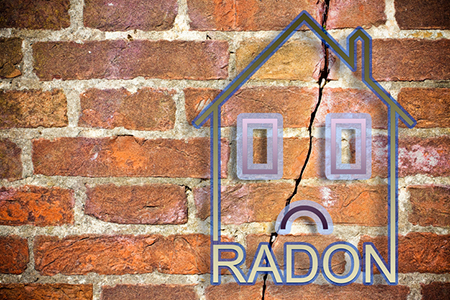Mold. Radon. Lead.
For many homebuyers, these are words that strike fear and introduce uncertainty into a real estate transaction. Depending on how severe the conditions are, they not only may be hazardous to the health of the home dwellers, but also may be deal-killers, as well.
So, what’s the best way to manage a transaction in which inspections reveal the ugly truth behind a typically picture-perfect home? The answer isn’t simple, as it largely depends on the severity of these hazardous home conditions, the location of the home and the temperament of the buyer.
Where Are They Found?
In many areas across the U.S., high radon levels are more commonplace than the discovery of lead and mold. According to the United States Environmental Protection Agency (EPA), higher concentrations of radon are most commonly found in the Northeast, Midwest, Southern Appalachia and Northern Plains regions. According to Radon.com, the highest levels are found in Pennsylvania, averaging 8.6pCi/L, followed by South Dakota at 9.6pCi/L.
In the Westchester area of New York, hazardous levels of mold are not as common except within distressed properties, but high radon levels are more expected.
“Much of Westchester is built atop bedrock and granite, and older homes tend to have porous stone foundations,” says Melissa Colabella, a real estate salesperson with Julia B. Fee Sotheby’s International Realty Irvington in New York. “I have only a few select clients who buy and sell distressed properties, which is a market where mold is an issue, but they typically buy the homes in cash and expect to gut it to the studs anyway. In the high-end residential market, you will not see many situations involving mold, but even luxury homes are prone to fluctuating radon gas.”
Lead, however, appears within areas that have older homes. Any homeowners looking to sell property built before 1978 must complete a lead disclosure. Areas such as Boston, Mass., are host to a multitude of older homes, which were typically constructed using lead pipes, along with lead-based paint.
“In Greater Boston, we have a majority of older homes, so lead is most common, then radon and mold only on occasion,” says Paul Mydelski, founder and chairman of RE/MAX Leading Edge in Boston.
And as Andrew Northrup, broker at Jameson Sotheby’s International Realty in Chicago, Ill., has experienced, these three conditions can fluctuate in severity and occurrence even within the boundaries of a single city.
“I’ve found radon, lead and mold in many different areas of the city and suburb,” says Northrup. “City radon levels are on a lower scale in the suburbs, but new developments in both areas can have higher levels of radon from the displacement of ground materials during construction. For lead, condos and single-family homes built before 1978 can potentially contain lead-based paint. Mold can be an issue in many homes in the city and suburbs where below-grade space is used, and in attics where improper ventilation is present.”
What Is the Biggest Challenge?
Regardless of what the levels of mold, radon and lead are, homebuyers are by far the biggest obstacle when trying to close a transaction with any of these conditions.
“The biggest challenge of managing a transaction with high levels of radon, lead or mold is actually trying to tamp it down with the client,” says Mydelski. “Our job is to guide the client through the options of tools to repair the issue.”
And often, as Colabella has experienced in her own business, parents can become an obstructing force even if the conditions can be easily remediated.
“Radon is a fairly simple mitigation process costing roughly $1,500-$2,000 in ,” says Colabella. “It’s hard to tell a first-time homebuyer that radon gas is not a deal-breaker when their family members say it is. Radon is a naturally occurring gas that fluctuates, and if you don’t have it during your initial home inspection, you may still detect traces in the future—and while a client may trust their REALTOR®, they will always trust their parents more.”
Agents should begin educating buyers on these conditions at the start of the buyer-agent relationship. Familiarizing buyers with the terminology, possible severity and options for mitigation will ensure they are not caught off guard and scared away during inspections.
“It’s important that REALTORS® educate their buyers on potential hazardous home conditions by providing them with the EPA’s educational pamphlets,” says Northrup. “Also, connecting them with licensed professionals that test and/or offer remediation services can help to set proper expectations on how to best deal with the issue and the potential costs. This information can also be provided to the seller to then negotiate a mutual solution.”
How Can Agents and Homeowners Be Proactive?
Agents should have scripts regarding property conditions for sellers, as well as buyers. Depending on the condition, there are steps that homeowners can take to ensure their own safety and safeguard against inspection complications when it’s time to sell; however, if these issues are not resolved before the home is listed, agents should inquire about any known problems so they may be disclosed to potential buyers.
“When representing a seller, it’s imperative that they disclose any current known issue to a buyer at the beginning of the transaction to alleviate improper expectations about the condition of the home,” says Northrup.
For homeowners looking to sell, Colabella recommends they get a pre-inspection and resolve the major issues or risk losing more money than what they would spend to remediate the problem.
“Radon tests are inexpensive at $125 and worth conducting every few years, especially if you are living in your basement,” says Colabella.
There are also steps that homeowners can take, not only to monitor levels of radon and watch for mold, but also to prevent these conditions from becoming hazardous to their health. It’s all about knowing what to look for, according to Northrup.
“For radon, keep in mind that any environmental changes to the ground area of the home—or adjacent area due to new construction or an addition to your existing home—could cause elevated radon,” says Northrup. “For lead, monitor for peeling interior and exterior paint. If sanding or removing old walls, remediation experts should be utilized for proper removal of dust and debris. For mold, monitor areas prone to moisture and humidity, such as finished basements and attic areas. Make sure these areas are low-humidity and are properly ventilated.”
With the help of technology, homeowners can better spot these conditions before they become dangerous. For example, a new radon testing tool, Airthings Wave, provides real-time data of indoor radon levels to homeowners who can simply wave their hand in front of the detector to find out if levels are healthy, temporarily high or dangerous and unhealthy. For homeowners, knowing about these problems before they transform into unlivable conditions (especially with mold) can be the difference between a quick fix and a financially devastating one.
“Most sellers do not do any testing or take any precautionary measures with lead unless they are planning renovations,” says Mydelski. “With radon, if you know you have high levels, in most cases, it’s actually relatively inexpensive to mitigate. Mold can be tricky because it is not always easy to discover, but just keeping dehumidifiers going and keeping things dry can be a homeowner’s best start.”
When Does It Make Sense to Back Out?
Not every transaction is created equal when these conditions factor in. While some mold problems are nothing to worry about, others may be beyond the scope of a simple remediation process and are a much too costly fix for the homebuyer.
“If I’m representing a buyer facing a $30,000 mold remediation project and sellers do not renegotiate the price (assuming mold is not taken into consideration in the price), then they should back out,” says Colabella. “But not all mold is created equal, meaning that it is not all expensive or dangerous. In situations where buyers are backing out due to small traces of harmless mold then, ultimately, they will lose a few households before they get comfortable enough to handle it.”
When it comes to lead or asbestos, their presence alone should not set off red flags for a transaction as, in most cases, they are easy to encapsulate with a new coat of paint or coverings for pipes and floors.
“Asbestos was widely used during a certain period and is not necessarily an issue,” says Colabella. “The fibers are hazardous when aggravated. I had a client walk right out of a house when she saw asbestos tile in the basement, but you can put tile on top of asbestos flooring and never aggravate it, making it a non-issue. Asbestos wrapped pipes are more concerning, but also easily remediated and often by the seller. These are not great reasons to walk away from a house you love.”
Looking beyond costs, it’s essential to gauge if a situation merits resolving or if the home poses too much of a safety and investment risk. The EPA estimates that radon causes 21,000 cancer-related deaths each year, while exposure to aggravated lead can lead to reduced growth of the fetus and premature births in pregnant women, as well as growth, behavioral and learning problems in children. Additionally, the Centers for Disease Control and Prevention has found evidence that exposure to mold can lead to upper respiratory tract symptoms and illnesses in otherwise healthy individuals.
 Liz Dominguez is RISMedia’s associate content editor. Email her your real estate news ideas at ldominguez@rismedia.com. For the latest real estate news and trends, bookmark RISMedia.com.
Liz Dominguez is RISMedia’s associate content editor. Email her your real estate news ideas at ldominguez@rismedia.com. For the latest real estate news and trends, bookmark RISMedia.com.











